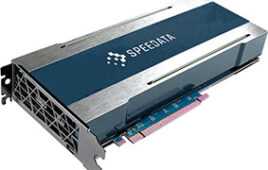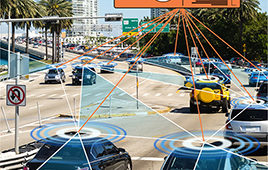 A popular English idiom expressing hindsight to be 20/20 suggests that uncertain choices become clear after they have been made. Apart from the quantum superposition implied in this phrase, its rear-facing orientation benefits from analyzing a time period in which change was actually unfolding at a slower rate. At some point near the 17th Century, famous thinkers such as Gottfried Leibniz, Francis Bacon and Thomas Young have been variously attributed as being the “last man to know everything.” The human lament that things in the past were much simpler is an accurate observation made from the perspective of riding along an exponentially increasing complexity curve. Examining the present or looking into the future can be a confusing torrent of concepts, vocabulary and technologies that appear to be spiraling out-of-control.
A popular English idiom expressing hindsight to be 20/20 suggests that uncertain choices become clear after they have been made. Apart from the quantum superposition implied in this phrase, its rear-facing orientation benefits from analyzing a time period in which change was actually unfolding at a slower rate. At some point near the 17th Century, famous thinkers such as Gottfried Leibniz, Francis Bacon and Thomas Young have been variously attributed as being the “last man to know everything.” The human lament that things in the past were much simpler is an accurate observation made from the perspective of riding along an exponentially increasing complexity curve. Examining the present or looking into the future can be a confusing torrent of concepts, vocabulary and technologies that appear to be spiraling out-of-control.
At the First IEEE Integrated STEM Education Conference (ISEC) in April of 2011, Professor Steve Zilora of the Rochester Institute of Technology Information Sciences and Technologies (IST) Department reflected on this increase in complexity, multiple sources of stimulation, and their effects on high school students’ interest in science, technology, engineering and mathematics (STEM) subjects. The teaching of foundational concepts to the current generation, says Professor Zilora, cannot be taught in the same manner as years past when generations were more accepting of the “deferred reward,” wherein seemingly unrelated concepts would coalesce into an integrated whole at some later point in a career.
Students surrounded by values, facts and discoveries from the feeds on their wearables, phones, tablets, laptops, desktops, game consoles and television monitors are increasingly driven by a need to find meaning, relevance and context. Even mid-career professionals suffer under the output of their own success. As experimentalists and theorists explore, we use descriptive vocabulary to characterize our observations. Metaphor, analogy and allegory often serve as scaffolding until explanations and relationships can be shored up by foundational concepts.
My favorite example of this process comes from the research group of Professor Wilson Sibbett at the University of St. Andrews, Scotland, in the early 1990s. His group was working on the generation of light from a continuous Argon ion-pumped Ti:sapphire laser when it spontaneously began to emit ultrafast femtosecond pulses. This unexpected behavior was termed “Magic Mode-locking” in both the professional and commercial laser industry until the effect was researched and revealed to be based on a discovery made by Scottish physicist John Kerr over one hundred years earlier in 1875.
 This process of making new observations and integrating them with previous discoveries is best known as the Scientific Method of Inquiry but, for some reason, scientists and engineers have adopted the planned obsolescence of Alfred P. Sloan, and we continue to describe it in new ways. In physics, we use the term Experimental Physics, while identical experiments and research performed by chemists are labeled Analytical Chemistry. Central to all three of these terms is the process illustrated in Figure 1 that identifies
This process of making new observations and integrating them with previous discoveries is best known as the Scientific Method of Inquiry but, for some reason, scientists and engineers have adopted the planned obsolescence of Alfred P. Sloan, and we continue to describe it in new ways. In physics, we use the term Experimental Physics, while identical experiments and research performed by chemists are labeled Analytical Chemistry. Central to all three of these terms is the process illustrated in Figure 1 that identifies
- a target value to be measured (Data)
- the use of a device or detector (Transducer)
- which produces a response or signal (Information)
- that is subsequently combined with other signals and calibration parameters (Model)
- to produce new Knowledge.
 This hierarchy is the foundation of the “DIKW Pyramid” of data, information, knowledge, and ultimately, Wisdom (Figure 2); yet another modern description of the Scientific Method.
This hierarchy is the foundation of the “DIKW Pyramid” of data, information, knowledge, and ultimately, Wisdom (Figure 2); yet another modern description of the Scientific Method.
In a June 2000 article in Scientific Computing, I described how the data-information-knowledge acquisition process was evolving into the term “Informatics.” Originally coined by German computer scientist Karl Steinbuch in 1957 to mean “Automatic Information Processing,” informatics is currently used in European laboratories to describe the discipline termed Computer Science here in the Western hemisphere. Informatics continues to evolve and has more recently been defined to mean “the study of the intersection of people, information and technology systems” by Professor Dennis Groth, Dean of the School of Informatics at Indiana University.
And now, we arrive at the very popular political buzzword of “STEM Education.. A close examination reveals that “science” refers to the new observations and discoveries described by data. The “technology” and “engineering” closely describe the design and construction of the tools used as transducers, and “mathematics” is central to the creation and use of models to convert information into knowledge. The National Science Foundation (NSF) expands its definition of STEM to include the study of subjects in the fields of physics, astronomy, chemistry, computer science, information technology, mathematical sciences, life sciences, anthropology, economics, psychology and sociology. I’m guessing the expanded acronym (left as an exercise to the reader), while possible to pronounce, is difficult to remember.
The 2012 Congressional Research Service report, STEM Education: A Primer, suggests that discipline-specific definitions of STEM are too static and that STEM should focus on “an assemblage of practices and processes that transcend disciplinary lines and from which knowledge and learning of a particular kind emerges” — a lovely definition of the Scientific Method. Perhaps the confusion that young people display toward STEM Education is that it is too often presented as a noun rather than a verb. The Scientific Method implies action and demands that discoveries be fused in the context of earlier discoveries to generate knowledge and understanding.
Young disciplines, including Bioinformatics, Laboratory Informatics, Medical Informatics, and Legal Informatics are simply the Scientific Method applied to specific types of knowledge. Providing students with demonstrated facility with the Scientific Method would open up employment and research opportunities in all of the STEM disciplines. Perhaps the politicians and marketing departments would be happy if we rebranded the Scientific Method as “S&M.”
Resources
- Science, Technology, Engineering, and Mathematics (STEM) Education: A Primer http://www.fas.org/sgp/crs/misc/R42642.pdf
- DAQ Evolves into Informatics: The next era of data acquisition Scientific Computing & Instrumentation, 17(7), June, 2000, pg. 13.
- IEEE Integrated STEM Education Conference (ISEC) http://ewh.ieee.org/conf/stem/
William Weaver is an associate professor in the Department of Integrated Science, Business, and Technology at La Salle University. He may be contacted at [email protected].




